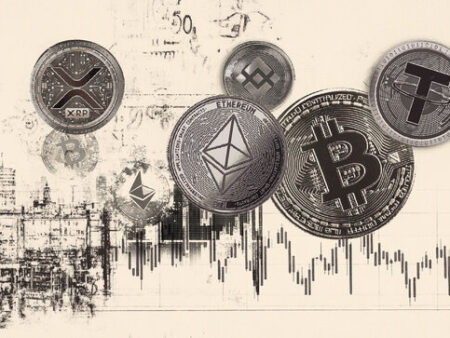Stablecoins Fuel Digital Transformation in Latin America
Stablecoins have evolved beyond being just an alternative for investors; they are now central to the digital transformation of businesses across Latin America. In a region known for its volatile currencies and limited access to traditional financial services, these digital assets are gaining traction as tools to streamline payments, safeguard value, and scale operations.
Companies, financial institutions, and service providers are increasingly integrating stablecoins into their daily operations, not merely as alternatives to traditional systems, but as integral components of the financial infrastructure that supports a new wave of institutional innovation in the region.
Mass Adoption Drives Practical Changes
High inflation, unstable local currencies, and restricted access to traditional banking services have spurred significant adoption of digital assets in Latin America. This trend, which began at the grassroots level, has evolved into a sophisticated ecosystem that now attracts institutional interest. More and more, businesses are turning to cryptocurrencies, especially stablecoins, to enhance operational efficiency and protect their businesses from economic volatility.
The numbers clearly reflect this trend. Latin America is the second-fastest-growing region in the world for stablecoin adoption, with a 42.5% increase in one year and over 36 million active wallets. In Argentina, for example, stablecoins already account for 61.8% of all crypto transaction volume, a clear indication that this market has become a key player.
Even after the lifting of currency controls in Argentina, the use of stablecoins remained strong. In the first weekend following the measure, USDT and USDC transactions tripled. The explanation is simple: speed, low cost, and practicality, especially for those receiving payments from abroad, making informal currency conversions, or operating in international trade.
In practice, stablecoins have moved beyond being a temporary safeguard and have become part of the financial infrastructure of Argentina’s digital economy.
Solution for Treasury and B2B Payments
In economies where the banking system is bureaucratic, expensive, or inefficient, stablecoins offer a direct and rapid solution for companies that need to make payments, protect cash, or transact in dollars without relying on traditional banks. Businesses throughout Latin America are already using dollar-pegged stablecoins to pay suppliers, maintain reserves, and hedge against currency volatility, often doing so more efficiently than companies in developed markets.
The Bitfinex exchange has recently listed EURQ and USDQ tokens, issued by Quantoz Payments, an electronic money institution licensed in the Netherlands. Both are EMTs (Electronic Money Tokens) issued on the Ethereum blockchain and comply with the EU’s MiCA regulatory framework. They offer fast settlement, full backing in fiat currency, and regulatory transparency, exactly what companies need for cross-border operations.
For companies in the region, access to regulated stablecoins like EURQ and USDQ means greater treasury efficiency, less dependence on unstable local currencies, and more predictable cash flow.
The Era of ‘Gostanomics’: Stablecoins in the App Economy
The way financial services are consumed in Latin America has changed—and quickly. With 92% of the population on social media, it is no longer conceivable that traditional banks are the sole providers of financial solutions. Enter the concept of “Gostanomics,” a new logic in which financial products adapt to the digital behavior of users, prioritizing experience, agility, and integration with the apps people already use daily.
A clear example of this is Meta’s plan to allow payments in stablecoins directly on its platforms, such as Instagram and WhatsApp. The proposal? That creators, freelancers, and companies can receive international payments instantly, simply, and with lower fees.
In practice, this reinforces what Gostanomics advocates: financial services need to be where people already are. And, in Latin America, where mobile comes before banking, the integration between stablecoins and digital platforms has the potential to be a major driver of financial inclusion and customer loyalty.
The Advancement of Global Regulatory Frameworks
Regulatory progress outside of Latin America is also accelerating the institutional adoption of stablecoins in the region. In the United States, the GENIUS Act, aimed at regulating stablecoins, has passed important stages in Congress and could pave the way for the American market to become one of the largest sources of liquidity for these assets. According to David Sacks, White House advisor for crypto assets, the project could release “trillions” of dollars in liquidity for the U.S. Treasury.
This movement directly impacts Latin America. A more liquid, secure, and regulated global market expands opportunities for financing, international trade, and access to capital. Companies and governments that move quickly will benefit from greater efficiency in cross-border operations and greater confidence from investors.
And what about Bitcoin? It remains relevant. In the region, many companies combine BTC and stablecoins in their strategies, using Bitcoin as a store of value and stablecoins for daily liquidity, cash management, and international payments.
Will Hernández, business development manager at Bitfinex in Latin America, sums up this dynamic well: “Bitcoin and stablecoins are not fads; they are part of the redesign of the global financial system. Stablecoins allow companies and funds to make international payments, manage liquidity, protect against currency risks, and automate financial processes at much lower costs than traditional systems. Therefore, the institutional use of these assets is growing more and more, especially among those seeking efficiency without sacrificing stability.“
Stay ahead of the curve in the fast-paced crypto world – explore the latest updates and trends at Cryptonewsfeeds.com.










